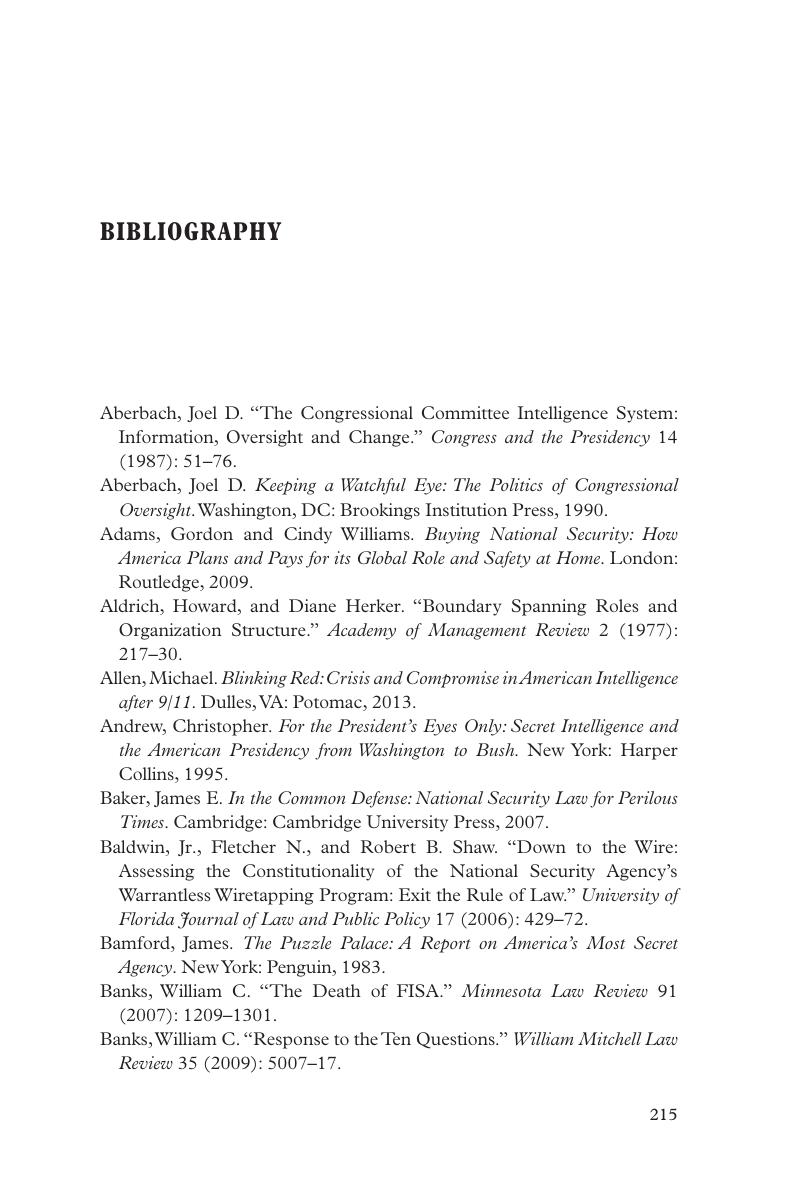Book contents
- Frontmatter
- Dedication
- Contents
- Acknowledgments
- Abbreviations
- 1 An Analytical Approach: Intelligence, Accountability, and Oversight
- 2 Organizing Secrecy: The CIA and Institutional Control
- 3 External Accountability: The Development of Congressional Oversight
- 4 Congress and Oppositional Oversight
- 5 An Independent Judiciary? The Domestic Implications of Intelligence and the Politics of Secret Oversight
- 6 Conclusions and Adapting Oversight Mechanisms for the Future
- Bibliography
- Index
- References
Bibliography
Published online by Cambridge University Press: 05 May 2015
- Frontmatter
- Dedication
- Contents
- Acknowledgments
- Abbreviations
- 1 An Analytical Approach: Intelligence, Accountability, and Oversight
- 2 Organizing Secrecy: The CIA and Institutional Control
- 3 External Accountability: The Development of Congressional Oversight
- 4 Congress and Oppositional Oversight
- 5 An Independent Judiciary? The Domestic Implications of Intelligence and the Politics of Secret Oversight
- 6 Conclusions and Adapting Oversight Mechanisms for the Future
- Bibliography
- Index
- References
Summary

- Type
- Chapter
- Information
- When Should State Secrets Stay Secret?Accountability, Democratic Governance, and Intelligence, pp. 215 - 228Publisher: Cambridge University PressPrint publication year: 2015



